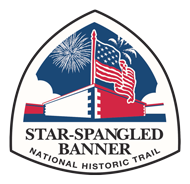The goal of the Trail Stewards program is to empower local communities to become the caretakers of the Star-Spangled Banner National Historic Trail—anyone can be involved! Being a Steward along this multi-state trail can mean many things, from participating in a clean-up of a local historic park or stream, to creating audio or video tours of your neighborhood’s Star-Spangled history for others to use to explore long-ago events.
Living Classrooms and the National Park Service, which manage the Star-Spangled Banner National Historic Trail, partner with schools in Maryland, Virginia, and Washington D.C. to engage students in diverse Trail Steward programs. Here are just a few examples of projects that local schools have completed!
